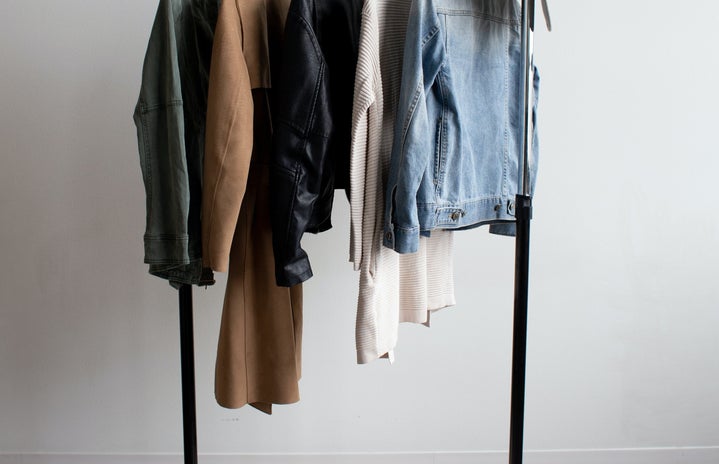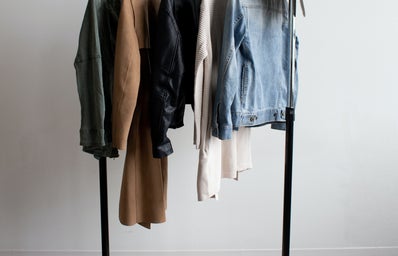It’s a common misconception that sustainable fashion is only accessible to those with a large budget. Many shoppers believe those who have a lower budget for fashion (such as a university student) will never be able to afford ethically produced brands without compromising style. While it’s true that some sustainable fashion brands are pricier, there are also small and easy ways everyone can build a more sustainable wardrobe, regardless of your budget.
I understand the idea of crafting a sustainable wardrobe from the start can be daunting; however, I have pieced together eight tips to help your transition to sustainable fashion become as easy (and as affordable) as possible!
1. Invest In Quality Over Quantity
While investing in a few quality products is likely to cost more upfront, it’s all about changing your mindset. It’s certainly more pricey to buy from a slow fashion brand, but the product will last longer, and you will be purchasing fewer items per season overall. My philosophy is to save up, invest, and buy less overall. Some of my favourite reputable slow fashion brands include Reformation, Amour Vert, Levi’s, and Stella McCartney.
2. Buy Second Hand
The second-hand clothing market is ever expanding as people are buying more and more items due to mass consumerism. This leads to people eventually getting rid of “old” stuff to make space for new items, and a lot of these clothes end up in second-hand shops. While second-hand shopping may not be as convenient as shopping in a regular store if you’re looking for something specific, it’s very budget friendly — and when you do find a beautiful item, it’s way more rewarding. Second-hand shopping can also make high-end brands more accessible to those with a smaller budget.
3. Purchase Trans-seasonal Clothing
Invest in items that you know you’ll be able to wear year-round. Take the climate you live in, and plan accordingly. If you live in Montreal, for example, where three-quarters of the year are on the colder side, it wouldn’t be sustainable to go all-out on a new summer wardrobe each year. Instead, spend your money on timeless pieces such as jeans, t-shirts, classic dresses, and any kind of item that you can layer in the winter and wear on its own in the summer. This will make for a much more sustainable wardrobe.
4. Increase your Clothing Lifespan
Unfortunately, the majority of produced clothing items are not made to last in our current fast-fashion climate. However, if you invest time and care into your wardrobe, you’ll be able to carry your clothing through many seasons. Increasing your clothing’s lifespan not only helps the environment by keeping your clothing out of a landfill, but also helps you spend less over time. Some easy habits to incorporate into your routine are rejecting the “only wear it once before washing mindset”, repairing/altering clothing, washing clothing inside out, washing clothing separately and by hand, and drying clothing by hanging it up.
5. Host a Clothing Swap Event
Clothing swap events are gaining popularity, and are super easy to organize if you gather some friends, family, and/or coworkers.These events not only allow you to get rid of what you no longer wear, but also allow you to pick up something “new”. As the old saying goes: “one man’s trash is another man’s treasure”. One of the biggest draws to this type of event is the relatively low cost; typically, clothing swap events are free or have a low entrance fee.
6. Shop “Fair Wear Brands”
The Fair Wear Foundation is an organization that works with brands and influencers to improve working conditions where clothing is made and ensure clothing production is sustainable. The organization has assembled a list of 144 brands that are approved by the foundation’s criteria called the “Fair Wear Brands”. This list is a good resource to start looking for items to add to your sustainable wardrobe. The list is clearly sorted into categories such as workwear, bags, accessories, womenswear, and more to make shopping easier.
7. Create a Capsule Wardrobe
Using capsule wardrobes — the process of keeping a few timeless items to be augmented with seasonal wear — started out as a very niche practice, but as minimalism and sustainability are being pushed to the forefront of people’s minds, the practice is gaining popularity. Capsule wardrobes encourage us to consider what we actually wear versus what’s just taking up space in our closet. There’s no right or wrong way to start your capsule wardrobe as it is completely made up of your own style. One technique created by Lee Vosburgh of Style Bee is the 10×10 Challenge. The challenge consists of 10 days and 10 items, which is a great way to dip your toe into this lifestyle before making the complete switch.
8. DIY/Upcycle Your Clothing
Changing the use or look of an item via DIY is another amazing way to incorporate sustainability into your wardrobe. The best part about this is that it is very low cost, or even free, as you already own the item. There are many tutorials online for the crafty and non-crafty alike that can walk you through the steps of repurposing an item. Personally, I’ve found inspiration on platforms such as TikTok or YouTube that walk me through the steps of recreating an item.
Overall, I hope, with this list, you feel more confident that a sustainable wardrobe is attainable for any budget. Not only will these tips help you save money on clothes in the long-run, you’ll also be directly contributing to a global movement towards sustainability. The more people that divest from the fast fashion industry and make the switch to a sustainable wardrobe, the less emissions that will come from the fashion industry.


